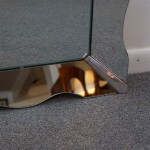How To Screen Mirror to a TV Without WiFi
Screen mirroring, the process of displaying the content of a mobile device or computer on a larger screen like a television, is a common technique for sharing presentations, watching videos, or playing games. While many screen mirroring methods rely on a WiFi connection, alternative solutions exist for situations where WiFi is unavailable or unreliable. This article provides a comprehensive guide on how to screen mirror to a TV without WiFi, exploring various technologies and methods.
Understanding the Limitations of WiFi-Based Screen Mirroring
Before exploring WiFi-free options, it’s crucial to understand why WiFi is often the default choice for screen mirroring. WiFi-based technologies like Miracast, Chromecast, and AirPlay utilize a wireless network to transmit data between the sending device (e.g., smartphone, laptop) and the receiving device (e.g., smart TV, streaming device). This offers convenience and flexibility, allowing users to mirror content without the need for physical cables. However, relying on WiFi introduces several limitations:
Firstly, a stable and reliable WiFi network is essential for a smooth screen mirroring experience. Weak or congested networks can lead to buffering, lag, and disconnections, disrupting the viewing experience. Secondly, WiFi-based screen mirroring can be susceptible to interference from other devices operating on the same frequency, further compromising performance. Thirdly, security concerns arise when using public or shared WiFi networks, as sensitive data transmitted during screen mirroring could be vulnerable to interception. Finally, some older TVs or devices may not support the latest WiFi-based screen mirroring protocols, limiting compatibility.
Utilizing HDMI Cables for Direct Connection
The most straightforward and reliable method for screen mirroring without WiFi involves using a High-Definition Multimedia Interface (HDMI) cable. HDMI is a digital interface that transmits both video and audio signals from a source device to a display device. This method bypasses the need for a wireless network, ensuring a stable and secure connection.
To screen mirror using an HDMI cable, the source device (e.g., laptop, smartphone with HDMI adapter) and the target TV must both have HDMI ports. Simply connect one end of the HDMI cable to the output port of the source device and the other end to the input port of the TV. Next, select the corresponding HDMI input on the TV using the remote control. The content displayed on the source device should now be mirrored on the TV screen.
While HDMI offers a reliable connection, it’s important to consider cable length and compatibility. Longer HDMI cables may experience signal degradation, especially at higher resolutions. Additionally, some older devices may not have HDMI ports, requiring the use of adapters or alternative connection methods.
For smartphones and tablets lacking a standard HDMI port, adapters are often necessary. These adapters typically convert the device's USB-C or Lightning port to an HDMI output. It’s crucial to select an adapter that is compatible with the specific device model and supports the desired resolution and refresh rate. High-quality adapters ensure optimal signal transmission and prevent compatibility issues.
Leveraging MHL (Mobile High-Definition Link) Technology
MHL (Mobile High-Definition Link) is an interface standard that allows mobile devices to transmit high-definition video and audio to TVs or monitors using a single cable. Similar to HDMI, MHL provides a direct connection without relying on WiFi. However, MHL-enabled devices are less common than HDMI-enabled devices, so compatibility is a primary consideration.
To use MHL for screen mirroring, both the mobile device and the TV must support MHL. An MHL adapter is typically required to connect the mobile device to the TV's HDMI port. The adapter converts the device's micro-USB or USB-C port to HDMI, allowing for seamless transmission of video and audio content. It's important to note that some MHL adapters require an external power source to function correctly.
When connecting the MHL adapter, ensure that the TV is set to the correct HDMI input channel. The content displayed on the mobile device should then be mirrored on the TV screen. MHL supports resolutions up to 4K and can also provide charging capabilities for the mobile device while it's connected to the TV.
Although MHL offers a viable alternative to WiFi-based screen mirroring, its limited adoption and the need for specific hardware requirements may make it less accessible than HDMI for many users. Before investing in MHL adapters, it's essential to verify compatibility with both the mobile device and the TV.
Exploring USB Screen Mirroring Options
USB screen mirroring, while less common than HDMI or MHL, offers another option for displaying content from a mobile device or computer on a TV without WiFi. This method typically involves connecting the device to the TV via a USB cable and using specific software or apps to enable screen mirroring functionality.
The availability of USB screen mirroring depends heavily on the TV model and the operating system of the source device. Some smart TVs have built-in USB screen mirroring capabilities, allowing users to connect their smartphones or tablets directly to the TV's USB port. In other cases, third-party apps or software may be required to facilitate the connection.
For Android devices, apps like Vysor offer USB screen mirroring functionality. These apps allow users to control their Android device from their computer and mirror the screen to the TV via a USB connection. The process typically involves installing the app on both the Android device and the computer and enabling USB debugging mode on the Android device.
For computers running Windows or macOS, some TVs may offer built-in USB display capabilities. When connected via USB, the TV can be recognized as an external monitor, allowing users to extend or mirror their computer's display. However, this functionality is not universally available and may require specific drivers or software installation.
USB screen mirroring can be a useful option in certain situations, but it's essential to check compatibility and install the necessary software. The performance of USB screen mirroring may vary depending on the USB port's speed and the processing power of the devices involved.
Using a Wired Network Connection (Ethernet)
While the article focuses on screen mirroring without WiFi, it's important to differentiate between using WiFi and using a network at all. A wired network connection, or Ethernet, can be used for screen mirroring, provided both the source device and the TV have Ethernet ports. This method bypasses the instability of WiFi while still leveraging network-based screen mirroring protocols. For example, if your TV supports DLNA (Digital Living Network Alliance) and your computer is connected to the same Ethernet network, you can stream media files from your computer to the TV.
This method is not strictly "without WiFi," as it relies on a network, but it avoids the specific problems associated with wireless networks. It offers a more stable and often faster connection than WiFi, particularly in environments with high wireless interference.
To utilize this method, connect both the source device (typically a computer) and the TV to the same Ethernet network using Ethernet cables. Ensure that both devices are properly configured with IP addresses within the same subnet. Then, use software or apps that support DLNA or other network-based streaming protocols to share content from the source device to the TV. This might involve enabling media sharing in the operating system settings or using a dedicated media server application.
The effectiveness of this method depends on the capabilities of the devices and the network infrastructure. While it eliminates WiFi interference, it still requires a functional network and may not be suitable for mirroring the entire screen of a device, but rather for streaming specific media files.
Addressing Potential Issues and Troubleshooting
Regardless of the chosen method, users may encounter issues during the screen mirroring process. Addressing these issues requires a systematic approach and a basic understanding of potential causes.
Compatibility Issues:
Ensure that all devices and adapters are compatible with each other. Check the specifications of the TV, mobile device, and adapters to verify support for the chosen screen mirroring technology. Consult the user manuals or manufacturer websites for compatibility information.Connection Problems:
Verify that all cables are securely connected and that the correct input source is selected on the TV. If using an adapter, ensure that it is properly powered and functioning correctly. Try different HDMI ports on the TV to rule out a faulty port.Display Problems:
If the mirrored image is distorted, blurry, or of poor quality, check the resolution settings on the source device. Ensure that the resolution is set to a compatible value for the TV. Adjust the TV's picture settings to optimize the display quality. If using a long HDMI cable, try a shorter cable to minimize signal degradation.Audio Problems:
If there is no audio output, check the audio settings on both the source device and the TV. Ensure that the correct audio output device is selected and that the volume is turned up. If using HDMI, verify that the HDMI cable supports audio transmission.Software Issues:
If using software or apps for screen mirroring, ensure that they are up to date and compatible with the operating systems of the devices involved. Restart the devices to resolve any temporary software glitches. Check the app permissions to ensure that they have the necessary access to the device's resources.Driver Issues:
If using USB screen mirroring on a computer, ensure that the necessary drivers are installed for the TV or adapter. Check the manufacturer's website for the latest drivers. Update the graphics card drivers on the computer to ensure optimal performance.By systematically troubleshooting these potential issues, users can effectively resolve most common problems associated with screen mirroring without WiFi.

Simple Ways To Mirror Iphone Tv Without Wifi 6 Steps

How To Screen Mirroring Any Android Phone Tv Without Wifi

Simple Ways To Mirror Iphone Tv Without Wifi 6 Steps

2024 Tutorial How To Mirror Phone Tv Without Wi Fi

4 Simple Ways To Mirror Phone Screen Without Wifi

4 Simple Ways To Mirror Phone Screen Without Wifi

Simple Ways To Mirror Iphone Tv Without Wifi 6 Steps

Can You Screen Mirror Without Wi Fi 2024 Answered

How To Screen Mirror Roku Without Wifi

How To Mirror Phone Tv Without Wifi 7 Easy Methods Gawvi








